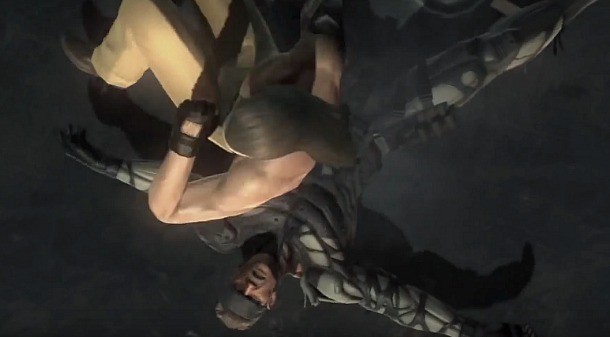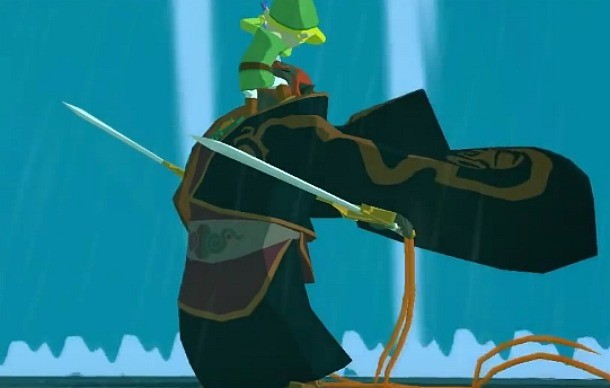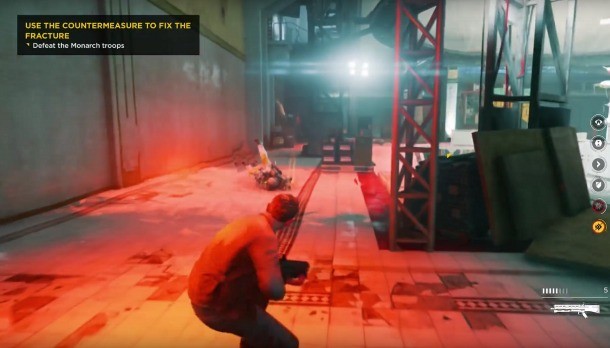Opinion – Stop Making Terrible Final Bosses

A sense of dread always hits me when I confront the final boss in a game. A lifetime of death and despair has conditioned me to expect the worst from these encounters – the one-hit kills, the enemy that blocks every attack in your arsenal, and the beast that dies and reanimates in more violent and grotesque forms.
Game developers want players to feel anxiety when they enter a boss’ lair. The last act of a journey should be monumental in scope and challenge, especially if it factors in a nemesis that has been a thorn in your side since the beginning. These finales are often feverish in pitch, longer than your typical skirmishes, and if designed well, conclude with the player feeling like they accomplished something great. I love it when my heart is still racing a couple minutes into the credits scroll.
After reflecting on the games I thought handled final conflicts well, I was surprised to find Nintendo has a long history of creating fair and balanced battles – some of the best in gaming. Most Mario, Zelda, and Metroid games wrap up with fights that are a true test of skill, and a culmination of the gameplay that led up to that point. My favorite of the bunch is Link squaring off against Ganondorf in The Legend of Zelda: The Wind Waker. The water gushing on the outskirts of the arena is the perfect reflection of the journey up to this point. Ganondorf towers over Link. Each of the two swords he carries is roughly twice the height of Link. This conflict screams “David versus Goliath.” Princess Zelda is intertwined in the strategy beautifully, and most of the combat pits Link’s sword skills against Ganondorf’s. The final blow (pictured below) is surprisingly violent for a Nintendo game, but was so powerful in the moment that it made me cheer.

Kratos’ bloody exchange with Ares in the first God of War is another conceptual masterpiece, and one of the coolest showdowns I’ve had in a game – two mountain-sized giants raining death down upon each other as the world burns in the background. Metal Gear Solid 3: Snake Eater’s finale against “The Boss” is also a work of art thematically and visually. It’s one of the most memorable battles I’ve had in a game, and it wasn’t a battle I wanted to be a part of. Hideo Kojima masterfully played off of our emotions in this moment.
But for every game that handles boss fights well, we run into someone like Mike Tyson, a foe turned legend solely from the staggering difficulty of his fight. While we can say Nintendo accurately captured the sheer dominance of Iron Mike at the time, few gamers raised their gloves in victory against him.

Tyson may be the ultimate destroyer of controllers for the history of this medium, but he has company in the camp of characters players never want to see again. All too often the lesson of Tyson being too difficult is forgotten. Even to this day, fighting games deploy a major difficulty spike for just the final fight. Street Fighter IV’s Seth is often held in the same breath as the words “rage quit.” He’s the definition of a cheap opponent. To a lesser degree, Mortal Kombat’s Shao Khan has proven to be a thorn in the sides of gamers, especially in Mortal Kombat 2 and 9. Yes, many of us took these foes down (dozens of times even), but ask yourself this: Did you ever enjoy any of those fights against these titans?
Is a spike in difficulty the best course of action for fighting game bosses? Sure, they can hit harder and have more health, but they shouldn’t make the player feel like they are getting punished for no reason, especially after they work their way through a series of foes, and feel like they have a degree of ownership over their characters and their respective move sets.
Outside of fighting games, we also frequently see final bosses that are designed to be entirely different than everything else in the game. Metal Gear Solid 4: Guns of the Patriots concludes with a fistfight between Solid Snake and Liquid Ocelot. I appreciate the intimacy of this moment from a storytelling perspective, but the action suddenly transitioning to a fighting game was jarring and the exchanging of fisticuffs went on for far too long.
I could have posted this opinion piece at any point in my 20-plus years of game writing, but I was actually spurred to write it recently after playing Quantum Break. I enjoyed the hell out of the game (one of my early favorites of the year), but it concludes with a miserable thud.

Rather than seeing Jack Joyce and Paul Serene, two characters gifted with time powers, throw down in spectacular fashion, Serene sits on a balcony and lets his heavily armored henchmen take on Joyce. Defeating these adversaries on their own wouldn’t be difficult, but in my playthrough, Joyce inexplicably kept dying. I had no idea what was happening. The screen would turn red (just like when he gets shot) and a second later he would fall over dead (you can see the red in the image above). It turns out Serene is launching area-of-effect blasts at Joyce. If you see red, you are inside of the blast radius, and must dash instantly away or suffer instant death.
This attack is never described or seen previously in the game. It completely changes the gameplay from being a cover-based shooter to running and gunning. If you stop moving in this fight, you’ve probably signed your own death certificate. None of this is information is delivered to the player. I voiced my frustration about this battle on Twitter, and I was bombarded with similar complaints from other players. Some people said the fight took them several hours to complete; others stopped playing the game there altogether. Since I was playing the game on the hard difficulty level, I even took to YouTube to learn a few tips. The person who provided the video guide doesn’t stop talking about how difficult this battle is. Although there are two phases to the fight, no checkpoint is offered.
For a game that is so nicely balanced up to this point, this conflict is surprisingly awful, not just from a design standpoint, but for the story as well. The bad blood between Serene and Joyce is not showcased in a meaningful way. No time powers are used here. You just pump a couple of bullets into him from afar. It’s a downer of a fight that left a bad taste in my mouth.
All too often games lean on the crutch of boss fights including add-on adversaries. In Star Wars: The Force Unleashed II, battling Darth Vader wasn’t apparently enough of a challenge. Additional force-powered foes are thrown into the fray to make it a miserable mess. A fight against Vader, the guy with the highest midi-chlorian count in the cosmos, should be more than enough. LucasArts simply didn’t come up with a creative way to make that fight have impact.
After completing Quantum Break, I moved on to Far Cry Primal, another exhilarating adventure that concludes with two overly tedious final encounters. Both of these conflicts unfold amid swarms of enemies. One foe requires you pepper her with dozens of arrows, which would probably turn her into an unrecognizable meat pincushion, and the other adversary needs to be beaten over the head for far too long. Again, these fights lack the heart and soul of the game, and are long and challenging just for the sake of being long and challenging.

A final encounter should be one of the top highlights in a game, as it is the culmination of the story and gameplay. I’m shocked how often games stumble with these important, send-off moments. Square Enix outsourced the boss fights for Deus Ex: Human Revolution, then later admitted it was a mistake. These bosses, which I call “horribly repetitious arena fights” in my review of the game, were later fixed by the core development team in the Director’s Cut version. Outsourcing boss fights makes them sound like an afterthought. Why even bother with them at that point?
I think Quantum Break is one of this generation’s most interesting games, and when I tell people to play it, I always attach the warning that it ends horribly. The last boss is often the last thing gamers experience. If a movie has a horrible ending, it can ruin the entire picture. The same goes for games, especially when these boss battles drag on and on. For the last two games I played, I’m not left thinking about the great time-bending gameplay or the thrill of exploring a prehistoric world – my thoughts hang on the horrible boss fights and the annoyances tied to them.

Get the Game Informer Print Edition!
Explore your favorite games in premium print format, delivered to your door.
- 10 issues per year
- Only $4.80 per issue
- Full digital magazine archive access
- Since 1991









